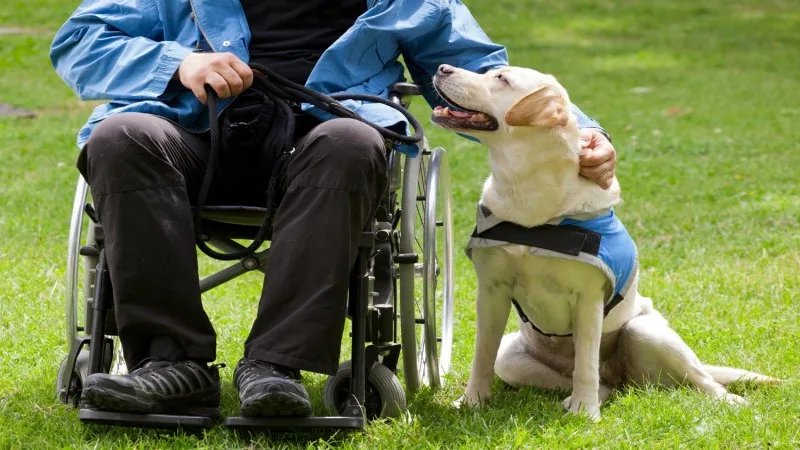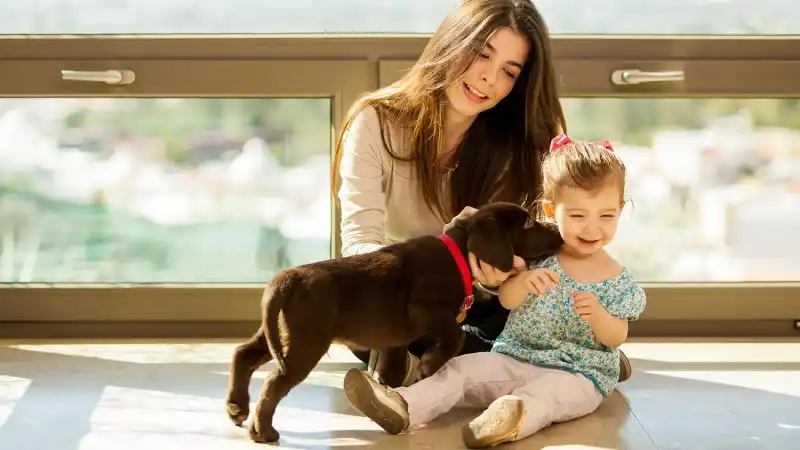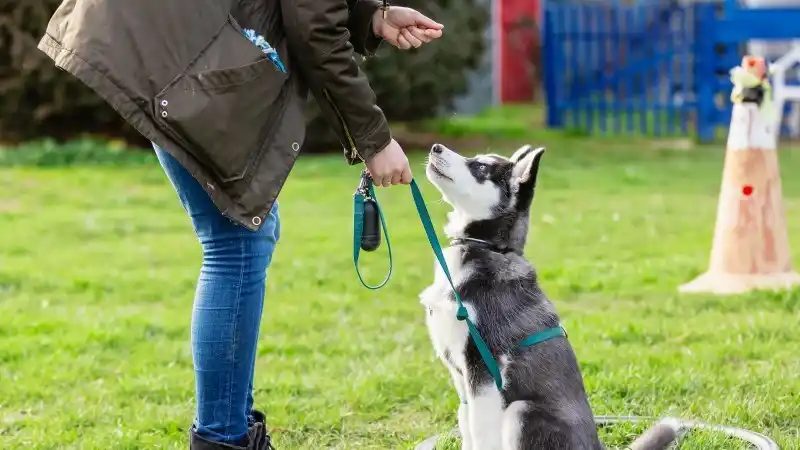Working Dogs: Therapy & Service Dogs
Service dogs, therapy dogs, working dogs, and other pets love having jobs to do! These service dog companions change lives for the better & help in any way they can.

Dogs are often referred to as man’s best friend, but for many children and adults, they are life-changing companions. Service dogs, therapy dogs, and working dogs all provide valuable skills and resources that add to the quality of life of their owners and those in need of care. However, don’t mistake a service dog for a therapy dog or a working dog. The jobs of each of these animals are as distinct as the training that prepared these cunning canines for their remarkable roles.
When many of us see a child accompanied by a dog in a vest, we assume we know the animal’s job. However, it is not always clear exactly what work the canine is doing. All service dogs, working dogs, and therapy dogs wear identifying vests. It is our responsibility to learn the different types of canine companions and understand what their jobs are.
Benefits of Therapy Dogs
Therapy dogs are comfort dogs as opposed to service dogs, who provide a service to their owners by comforting them with a calm, confident presence. You will often find these animals roaming the floors of a children’s hospitals or bringing a smile to the elderly in a nursing home. To these dogs, that is their job.
Some schools use therapy dogs as a way to comfort students or to improve student behavior or productivity. Sometimes, these dogs will accompany students who have been a victim of bullying or are suffering from a learning or emotional disability.
Typically, therapy dogs can be spoken to and pet, however, one should always ask permission from the owner before interacting with any dog in public.
Many certified therapy dogs must first get their AKC Canine Good Citizens Certification (CGC). This certification is offered by the American Kennel Club, but dog owners can get their dog certified at various training facilities around the country. The certificate requires passing a ten-step test in which the dog has to demonstrate that they are obedient, self-confident, and friendly.
All dogs are eligible for CGC certification. Even if you don’t plan on making your dog a therapy dog, many office buildings, hospitals, stores, hotels, and restaurants recognize the CGC certificate and grant them special permissions.
Benefits of Service Dogs
Service dogs are dogs that have been trained to provide a specific service to children and adults with injuries, physical and mental disabilities, illnesses like diabetes and epilepsy, or other special needs. These special dogs should not be pet or disturbed while they are on duty.
The services the dogs provide can vary greatly. Seeing eye dogs, for example, will guide those who are blind. Some may assist people in wheelchairs with daily household tasks. Some work with the hearing impaired and will alert them to danger and noises, such as a doorbell, oven timer, phone ringing, etc.
Many service dogs are trained to alert their owner to changes in their blood chemistry or neurological changes, which is common for those suffering from diabetes or epilepsy. These dogs can actually detect when a diabetic event or seizure is going to happen and alert their person prior to the event, so they to get to a safe place, get help, or take medication.
Children with autism or other special needs may also use a service dog and, according to the American Kennel Club (AKC), there are also psychiatric service dogs that assist individuals with PTSD, agoraphobia, and anxiety.
Dogs may even be trained to sniff out allergens like peanuts for children with severe nut allergies. These dogs often go to school or other social events with the child. According to the AKC, these dogs have the ability to even detect the residue of an allergen.
Benefits of Working Dogs
According to the AKC, a working dog “is a canine working animal that learns and performs tasks to assist and/or entertain its human companions. Detection, herding, hunting, search and rescue, police, and military dogs are all examples of working dogs.”
K-9 Officers provide services to law enforcement. Some of these dogs are trained to sniff out bombs or drugs. Search and rescue dogs can find missing people, while others are trained to assist officers in catching criminals. These dogs are trained to work with large crowds, in small spaces, and around loud noises like gunfire. They are immensely loyal and will dutifully and happily protect their human patrol partner.
Love to Work
Many people wonder if working dogs, service dogs, and therapy dogs like their job. The answer is yes. Typically, the breeds used in all three of these areas have the temperaments suitable for their work. Service dogs have an innate desire to help. Therapy dogs like to comfort. Working dogs like to work.
Working dogs don’t just like to work, they love to work and are often unhappy without a job. If you own one of these breeds, you probably know there are many activities, sports, and hobbies that you can do to keep them stimulated and content.
Therapy, working, and service dogs are often acknowledged for their service in the media and in the community. Each of these special animals provides life-changing assistance through their companionship and work.
To honor the incredible work of these loyal servants, the AKC honors five amazing animals with the AKC Humane Fund Awards for Canine Excellence (ACE). In addition to the award, AKC Pet Insurance also provides these devoted dogs with a year of insurance coverage to help keep them safe and healthy so that they can best perform their jobs.
So next time you see a dog in a vest, think about all the remarkable things that that dog may secretly be doing.
Pet insurance can help pay for unexpected vet bills. Get a dog insurance quote from AKC Pet Insurance today (underwritten by Independence American Insurance Company) and prepare for accidents, illnesses, and much more.

Travel junkie, Amber Kingsley, is a freelance writer living in Santa Monica, CA. Her art history background helps her hone in on topics that are of interest to readers. She is a dog enthusiast and loves spending time with her Pomeranian, Agatha.
READ MORE ARTICLES

